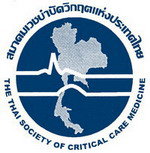Diastolic shock index: Its importance and application in critically ill patients: A narrative review
Diastolic shock index in ICU patients
DOI:
https://doi.org/10.54205/ccc.v33.270310Keywords:
Diastolic shock index, Septic shock, Diastolic blood pressureAbstract
A recently developed method to measure vasodilatation is the diastolic shock index (DSI), which can be calculated by dividing heart rate by diastolic blood pressure. The DSI plays a significant role in many medical conditions. The focus of this review is to determine the evidence-based data of diastolic shock index in various conditions. Current trials recommend adding norepinephrine when diastolic arterial pressure is below 40 mmHg or diastolic shock index is more than 3. Besides, recent trials have studied the diastolic shock index in myocardial infarction, the peri-intubation period, the intraoperative period, and emergency department triage. Higher diastolic shock index value at presentation of severe cases of sepsis could identify patients who might benefit from early vasopressors and predict the progression of septic shock in emergency department triage. Moreover, it could help as a tool to identify a higher risk of death in myocardial infarction and peri-intubation period hypotension. However, the cut-off points for the diastolic shock index vary across different conditions.
Downloads
References
Pottecher T, Calvat S, Dupont H, Durand-Gasselin J, Gerbeaux P, the SFAR/SRLF workgroup. Haemodynamic management of severe sepsis: recommendations of the French Intensive Care Societies (SFAR/SRLF) Consensus Conference, 13 October 2005, Paris, France. Crit Care. 2006;10:311.
Hamzaoui O, Teboul JL. Importance of diastolic arterial pressure in septic shock: PRO. J. Crit. Care. 2019;51:238–240.
Ospina-Tascon GA, Teboul JL, Hernandez G, Alvarez I, Sánchez-Ortiz A, et al. Diastolic shock index and clinical outcomes in patients with septic shock. Ann Intensive Care. 2020;10:41.
Kim D, Park J, Hwang S, Jeong D, Lee G, Kim T, et al. Prediction of vasopressor requirement among hypotensive patients with suspected infection: usefulness of diastolic shock index and lactate. Clin Exp Emerg Med. 2022;9(3):176-186.
Monnet X, Lai C, Ospina-Tascon GA, De Backer D. Evidence for a personalized early start of norepinephrine in septic shock. Crit Care.2023;27(1):322.
De Backer D, Cecconi M, Chew MS, Hajjar L, Monnet X, Ospina-Tascón GA, et al. A plea for personalization of the hemodynamic management of septic shock. Crit. Care. 2022;26:372.
De Backer D, Cecconi M, Lipman J, Machado F, Myatra SN, Ostermann M, et al. Challenges in the management of septic shock: a narrative review. Intensive Care Med. 2019;45(4):420-433.
Lee KJ, Kim Y, Jeon K, Ko RE, Suh G, Oh D, et al. Shock indices are associated with in-hospital mortality among patients with septic shock and normal left ventricular ejection fraction. PLoS One. 2024;19(3):e0298617.
Jeon Y, Kim S, Ahn S, Park JH, Cho H, Moon S, et al. Predicting septic shock in patients with sepsis at emergency department triage using systolic and diastolic shock index. American Journal of Emergency Medicine. 2024;78:196–201.
Zhang TN, Hao PH, Gao SY, Liu CF, Yang N. Evaluation of SI, MSI and DSI for very early(3 day) mortality in patients with septic shock. European Journal of Medical Research. 2022;27:227.
Russotto V, Myatra SN, Laffey JG, Tassistro L, Antolini L, Bauer P, et al. Intubation practices and adverse peri-intubation events in critically ill patients from 29 countries. JAMA. 2021;325(12):1164-1172.
Smischney NJ, Kashyap R, Khanna AK, Brauer E, Morrow LE, Seisa MO, et al. Risk factors for and prediction of post-intubation hypotension in critically ill adults: A multicenter prospective cohort study. PLoS One. 2020;15(8):e0233852.
Nathan J, Mohamed O, Darrell R. Association of Shock Indices with Peri-Intubation Hypotension and Other Outcomes: A Sub-Study of the KEEP PACE Trial. J Intensive Care Med. 2024; 39(9):866-874.
Indraratna K. Is the diastolic shock index of value in the intra operative management of cardiac surgical patients?. Journal of Critical Care. 2024;81.
Reinstadler SJ, Fuernau G, Eitel C, Waha SD, Desch S, Metzler B, et al. Shock Index as a Predictor of Myocardial Damage and Clinical Outcome in ST-Elevation Myocardial Infarction. Circ J. 2016;80(4):924-30.
De Backer D, M Pinsky. Norepinephrine improves cardiac function during septic shock, but why?. British Journal of Anaesthesia. 2018;120(3):421e424.
Arévalo-Coronado A, López-Manríquez A, Hernández-González M, Roca-Chiapas J. Relationship between the systolic-diastolic shock index and mortality in myocardial infarction. Rev Med Inst Mex Seguro Soc. 2023;61(2):109-13.

Downloads
Published
How to Cite
Issue
Section
License
Copyright (c) 2025 The Thai Society of Critical Care Medicine

This work is licensed under a Creative Commons Attribution-NonCommercial 4.0 International License.




